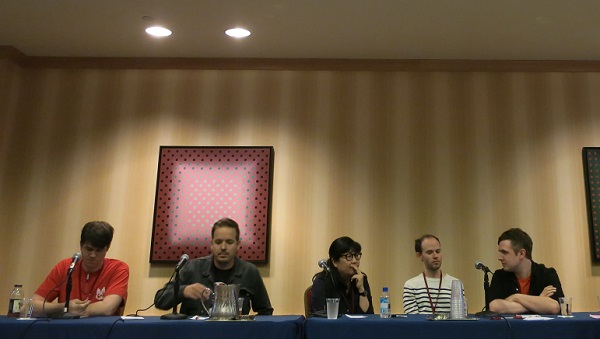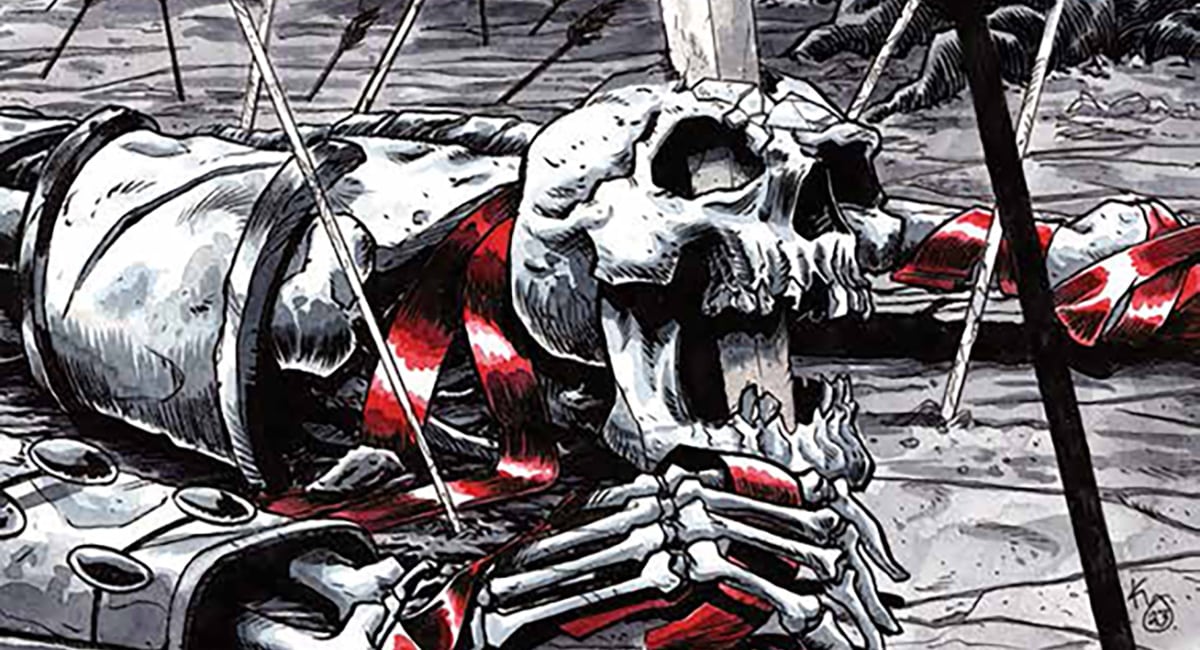by Zachary Clemente
This past weekend, the 20th annual Small Press Expo (SPX) brought an explosion of independent and small press comics to the Marriott hotel in Bethesda, MD. Literally overflowing with an abundance of talent, the weekend was filled with amazing creators, signings, panels, even a wedding and a prom. One of the panels, Micro-Press and Beyond, discussed the findings of a study on micro-press comics publishers by moderator Robyn Chapman, who runs mini-comics publisher Paper Rocket, as well as posing the study’s questions to the panel participants. From left to right, the publishers are Chuck Forsman (Oily Comics), Keenan Marshall Keller (Drippy Bone Books), Anne Koyama (Koyama Press), and Raighne Hogan & Justin Skarhus (2D Cloud).
Chapman kicked off the panel by showing her findings, collected in The Tiny Report, a mini-comic she published, based on questions she received from 40 micro-press publishers, which she defines as being “one-person publishing houses”. The purpose of the Tiny Report is to be a “micropress yearbook”, serving to be an aid in understanding and chronicling the comics micro-press movement. One by one, she took the panel through some of the questions she posed for the report, seeing how they affect each representing publisher. While the responses for Forsman, Keller, Hogan, and Skarhus were fairly uniform; Koyama, as a more established publisher had slightly different answers. Although all agreed the major challenge of publishing was funding, seeing it as the root of any other discussed challenges, such as distribution or marketing.

The majority of the panel was an informative and lengthy discussion about how micro-publishing is in essence a massive clustercuss. Selling books to comic stores often requires very precise book-keeping, dealing with printing and shipping costs is a measured act of a madness, running the convention circuit can be emotionally and physically punishing, and even trying managing an online store or crowd-funding campaigns can be a full-time job. Despite all these hurdles, micro-press publishers have been springing up left and right to print minis and floppies, filling the void left by publishers left by publishers like Fantagraphics or Drawn & Quarterly, who now focus more on graphics novels, collections, or art books. Ultimately, the issues voiced come from a lack of steady funding as it’s not uncommon for an independent publisher to see a check for books sent to a store 6 months after the fact.
During the audience Q&A portion, a question I’ve been curious about was raised about artist contracts and compensation. Most of the publishers pay in copies or small royalties, depending from artist to artist and many don’t really bother with formal contracts. Only Koyama utilizes formal, customized contracts and pays a lump sum up front to each artist she works with.
“You’re an angel from Heaven.” – Forsman to Koyama

Lastly, on the word of submitting, all but Koyama takes submissions through email or convention drop-offs – all stating that finished or nearly finished work is ideal. Koyama bemoaned the fact that she often cannot find the names of people on their websites or tumblr pages and won’t be able to contact them. Koyama press rarely takes submissions, only publishing 10 books a year, all handpicked by Anne herself. Everyone agreed that the best possible policy for getting published is just “make a good comic.” When asked about the “Beyond” of micro-publishing, all wished for a climate where sustainable and local printing was a more affordable option, but for now, overseas printing is the most economical option.
This was my first time at SPX and it was an exceptional experience. I’ll be back next year and (hopefully) continuing small press coverage!









Thanks, Zach! One tiny correction. My survey was completed by 40 micro-publishers, not 52. 52 was the number of micro-publishers I was able to find who were active in 2013.
Thanks Robyn! I’ve updated the post.
Thanks for the coverage Zach!
I’d like to dispute the suggestion that all the answers from the labels were more of less uniform outside of Koyama. The reason the panel was so good, to my eyes, was that we all came from different points on the micro-publishing spectrum. Example: Koyama never sells direct online, the rest of us do, yes, BUT, Oily makes most of their sales online, Drippy Bone makes most of their sales at shows, 2DC sales are split between online and direct a bit more evenly.
More thoughts over on our tumblr here >> http://2dcloud.tumblr.com/post/97812317989/response-to-coverage-of-micro-press-panel-at-comics
Raighne, thanks for the clarification and for expanding on the differences between the different publishers in the panel. It’s interesting to see how varied publishers like 2D Cloud can be – I’ll endeavor for more detailed reports in future coverage. See you next SPX!
Comments are closed.